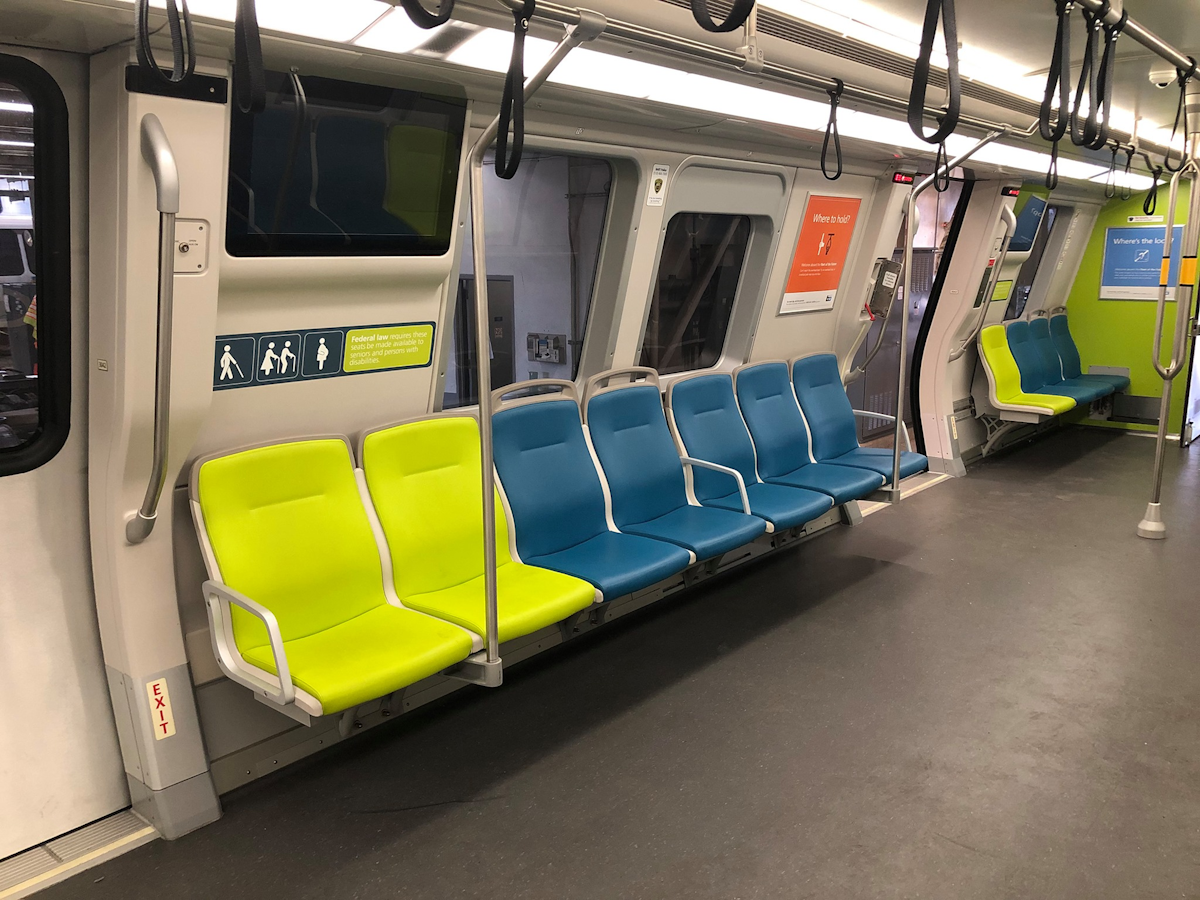
The Bay Area Rapid Transit (BART) is launching weekly train car loading charts to provide a snapshot of what riders can expect on-board trains during the pandemic.
The commitment to share this data is part of BART’s 15-Step Welcome Back Plan as the region reopens. The schedule-based passenger load data outlines the average number of riders on each car of a specific train. The charts will be shared weekly online and on social media to give riders a tool to plan their return to work and have greater confidence that they're doing so in as safe a manner as possible.
The data is an estimation calculated from fare gate information and assumes passengers are evenly spread through all cars on a train. In practice, BART says people will find more passengers on the middle cars, and fewer on the front and rear cars of a train. Overhead announcements are being made to remind riders to spread out.
“We know roughly how many people are on-board a specific train based on when and where someone tags into the system and then tags out,” said BART’s Chief Communications Officer Alicia Trost. “We are taking the tools we have available and presenting it in a way that is easy for riders to personalize. Not only does the information help riders find trains that have been less crowded, its keeps BART accountable to our commitment to return to 15-minute commute train frequencies as ridership returns.”
The color-coded charts are specific to line, stations, and time of day on weekdays. The data represents the number of people on board the train as it departs a station, which is why the end of line stations show as zero.
The data is not available in real-time and BART says it does not have the ability to track actual numbers of passengers on a given car. Therefore, the numbers on the charts may not be reflected on a car where riders have not spread out evenly to more open cars on the same train, or for trains that experience delays which result in more people boarding.
The passenger load charts are provided in PDF format. Each week, BART staff will select a day that represents average travel for the week and post the charts before Friday. BART chooses a single day per week to select a “typical” day without delays or similar events that would not be reliable for forecasting likely crowding. For someone with flexible work hours or in a high-risk category, they can plan their commute to ride a train that has shown day over day to be less crowded than other trains.
“Releasing this information will also be a helpful tool for the business community,” said Trost. “BART has been doing extensive outreach to employers about our COVID-19 response efforts and encouraging staggered shift times to spread out the commute. These charts can provide Bay Area companies with the data they need when developing re-entry office plans.”
BART has determined riders can maintain social distancing of six feet on-board train cars with about 30 people per car. Social distancing of three feet can be achieved with about 60 people per car. To help maintain achievable social distancing for as long as possible, BART will plan to add extra commute time trains in the 15-minute headway interval to relieve crowding on trains where the average passenger load data is consistently above 30 passengers per car. It will take about one to two weeks to add trains back into the schedule.
Loading data is not available for BART to Antioch DMU trains or BART to OAK trains and will not be included in the chart.
"load" - Google News
July 01, 2020 at 10:57PM
https://ift.tt/3eLo9We
BART launches data-driven passenger load charts - MassTransitMag.com
"load" - Google News
https://ift.tt/2SURvcJ
https://ift.tt/3bWWEYd
Bagikan Berita Ini














0 Response to "BART launches data-driven passenger load charts - MassTransitMag.com"
Post a Comment